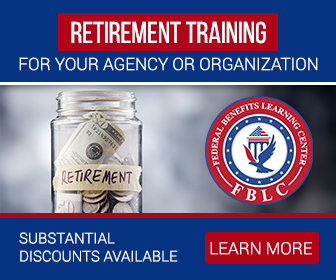Key Takeaways
-
Consulting a retirement advisor early in your public service career can significantly reduce financial surprises and stress in your retirement years.
-
Advisors help translate complex rules about pensions, TSP withdrawals, Social Security coordination, and Medicare integration into actionable plans specific to your situation.
Why Most Government Employees Skip Retirement Advisors
- Also Read: The Side of Civilian Military Employment Benefits Nobody Mentions Until After You Retire
- Also Read: 4 Things You Should Consider Before Deciding When to Start Your Social Security Payments
- Also Read: Are You Eligible for the Federal Employee Retirement System (FERS)? Find Out Here
-
Their HR department provides sufficient guidance
-
Online calculators and tools are enough
-
Their pension alone will meet future needs
This mindset overlooks critical gaps—such as tax efficiency, withdrawal strategies, survivor benefits, and Medicare decisions—that can materially affect retirement security.
What You Miss When You Skip Professional Advice
Even though you may have strong baseline benefits as a government employee, retirement is not a one-size-fits-all process. Here’s what you risk overlooking without expert advice:
-
Incorrect TSP withdrawal strategies: Without guidance, you might withdraw too aggressively and run out of savings, or too conservatively and pay unnecessary taxes.
-
Timing missteps: Retiring before meeting key milestones like your MRA (Minimum Retirement Age) or the 10-year mark for pension eligibility can lead to permanent reductions.
-
Social Security surprises: Many employees don’t factor in the earnings limit, the Windfall Elimination Provision (prior to 2025), or the effects of early claiming.
-
Misunderstanding FEHB in retirement: Not understanding how to maintain your Federal Employees Health Benefits (FEHB) coverage into retirement can lead to losing it altogether.
-
Survivor benefit elections: Failing to make informed decisions about survivor benefits can leave a spouse without income or coverage.
A retirement advisor ensures that you integrate all these moving parts into a coherent strategy tailored to your goals.
What Retirement Advisors Actually Do for Government Employees
A retirement advisor who understands the public sector doesn’t just offer generic investment tips. Their role often includes:
-
Reviewing your High-3 average salary: Ensuring your annuity calculation is accurate and optimized.
-
Explaining annuity options: Helping you understand the FERS basic annuity, Special Retirement Supplement (if applicable), and Social Security.
-
TSP withdrawal planning: Creating a drawdown strategy that aligns with your risk tolerance, required minimum distributions (RMDs), and income needs.
-
Healthcare planning: Advising on how to coordinate Medicare with FEHB in retirement, especially after age 65.
-
Analyzing pension offset impacts: Addressing the Government Pension Offset (GPO) if you qualify for spousal Social Security benefits.
-
Tax planning: Ensuring you understand how pension, TSP, and Social Security income will be taxed.
Most importantly, they build a retirement timeline with clear actions for every stage of your career and post-retirement.
When You Should Start Consulting a Retirement Advisor
The earlier, the better. Ideally, you want to start working with an advisor 5–10 years before your intended retirement date. That window gives you:
-
Time to adjust your TSP contributions or shift investment allocations
-
Flexibility to purchase service credit (like military or refunded civilian service)
-
A chance to correct FEHB or FEGLI elections
-
The ability to test different retirement dates for their financial impact
But even if you’re within 2–3 years of retirement or already retired, it’s not too late. A post-retirement review can still help you with:
-
Tax-efficient withdrawal strategies
-
Medicare enrollment timing and coordination
-
RMD calculations
-
Survivor benefit elections and spousal planning
What Your Retirement Timeline Should Include
A skilled advisor will help you establish a timeline that addresses the following benchmarks:
10–15 Years Before Retirement
-
Maximize TSP contributions and catch-up contributions if age 50+
-
Check eligibility for early retirement options like MRA+10 or Special Provisions (e.g., LEOs, FFs)
-
Consider buying back military or temporary time
-
Review High-3 salary and plan for potential increases
5–10 Years Before Retirement
-
Evaluate FEHB eligibility in retirement (five-year rule)
-
Explore long-term care insurance or alternatives
-
Analyze expected annuity and TSP income against projected expenses
-
Begin Social Security strategy planning
1–5 Years Before Retirement
-
Choose a retirement date based on eligibility, cost-of-living adjustments (COLAs), and sick/annual leave balances
-
Elect survivor benefit options
-
Fine-tune your TSP allocation for income generation and stability
-
Estimate Medicare Part B premiums and determine enrollment timing
-
Ensure all beneficiary designations are current and correct
Final Year Before Retirement
-
Submit retirement paperwork 6–12 months out
-
Schedule final counseling with HR and an advisor
-
Plan transition from FEHB to Medicare coordination
-
Create a withdrawal strategy from TSP for the first 12–24 months
Why Public Sector Retirement Planning Is More Complex Than It Looks
At first glance, public sector retirement might seem straightforward. But dig a little deeper, and complexity emerges:
-
Interlocking benefits: FERS combines pension, Social Security, and TSP—each with different rules, taxation, and eligibility criteria.
-
Federal vs. State differences: State retirement systems often have different contribution rates, vesting rules, and payout formulas.
-
Healthcare coordination: FEHB and Medicare have intricate coordination requirements. Choosing to delay Medicare Part B can backfire unless you understand the PSHB changes for Postal retirees or other special cases.
-
Spousal scenarios: Decisions around spousal coverage, survivor benefits, and Social Security require nuanced analysis.
An advisor makes sense of these intersections and helps you avoid blind spots.
How to Choose the Right Retirement Advisor
Not all advisors understand the intricacies of public sector benefits. Look for someone who:
-
Has experience working with government employees and retirees
-
Understands the FERS and CSRS systems
-
Knows how TSP withdrawals interact with RMDs and tax brackets
-
Can model different retirement dates and outcomes
-
Offers fiduciary advice, not tied to selling specific products
Also, ensure they’re familiar with recent changes, such as the 2025 repeal of the Windfall Elimination Provision (WEP), the new $2,000 Medicare Part D out-of-pocket cap, and the PSHB transition for postal employees.
Costs You Might Face Without an Advisor
While hiring a retirement advisor is an upfront cost, skipping one can result in much greater expenses down the line:
-
Missed TSP growth due to poor asset allocation
-
Higher Medicare premiums due to incorrect income reporting
-
FEHB coverage loss due to misunderstandings about enrollment
-
Lower annuity due to poor High-3 planning or timing
-
Taxes on lump-sum withdrawals or RMD mistakes
An advisor helps you avoid these missteps with proactive planning.
Final Steps to Ensure a Confident Retirement
It’s never too late to get organized—but the sooner you start, the better. If you haven’t worked with a licensed advisor before, consider starting with a consultation focused specifically on your retirement timeline, benefits, and income sources.
Getting guidance now means fewer surprises when you leave government service. Retirement should be a reward for years of public service—not a maze of complicated decisions. A trusted advisor can help you make sense of your options and retire with confidence.
To speak with someone who understands public sector retirement, get in touch with a licensed agent listed on this website for professional advice tailored to your needs.










